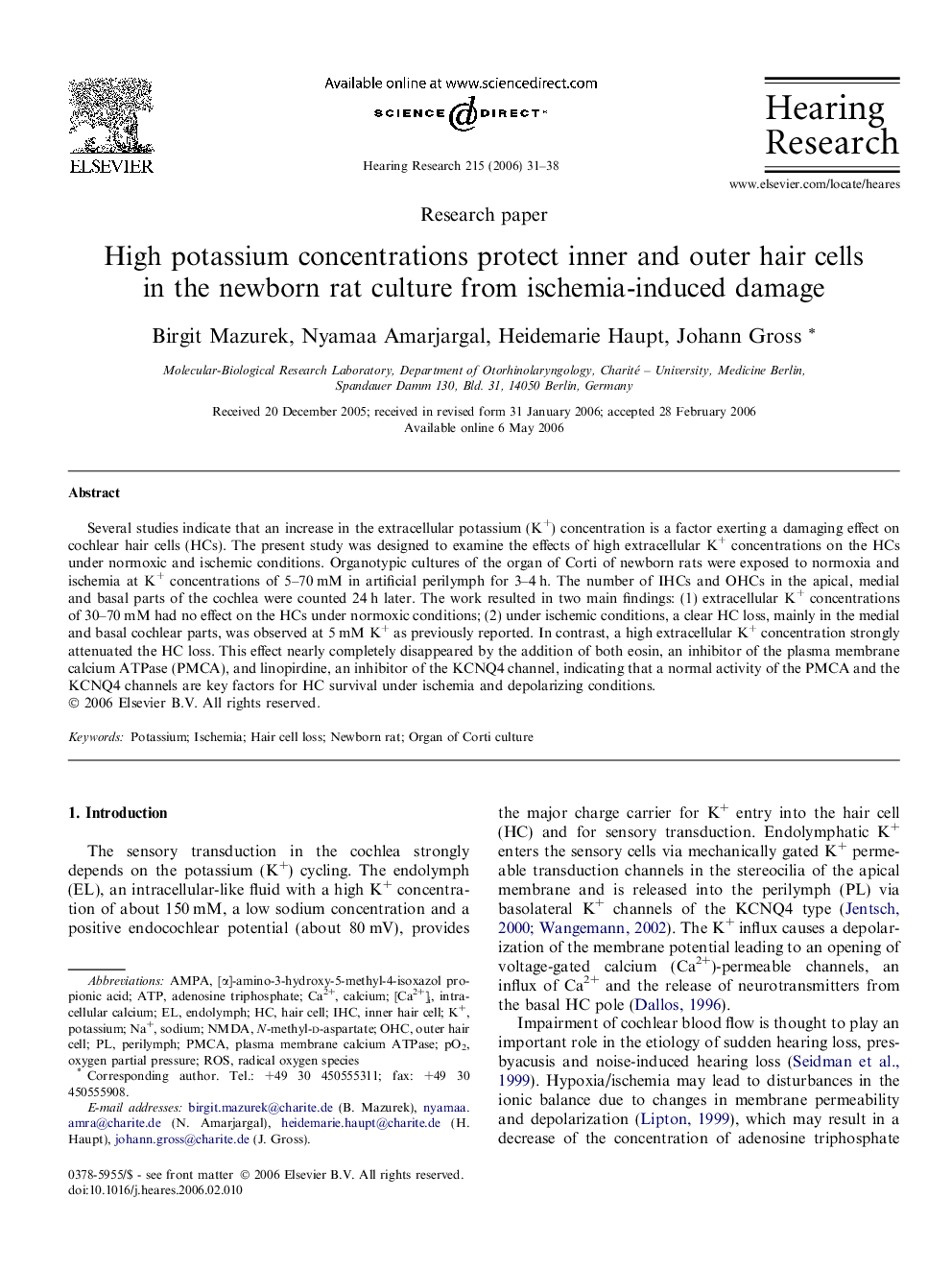| Article ID | Journal | Published Year | Pages | File Type |
|---|---|---|---|---|
| 4356485 | Hearing Research | 2006 | 8 Pages |
Several studies indicate that an increase in the extracellular potassium (K+) concentration is a factor exerting a damaging effect on cochlear hair cells (HCs). The present study was designed to examine the effects of high extracellular K+ concentrations on the HCs under normoxic and ischemic conditions. Organotypic cultures of the organ of Corti of newborn rats were exposed to normoxia and ischemia at K+ concentrations of 5–70 mM in artificial perilymph for 3–4 h. The number of IHCs and OHCs in the apical, medial and basal parts of the cochlea were counted 24 h later. The work resulted in two main findings: (1) extracellular K+ concentrations of 30–70 mM had no effect on the HCs under normoxic conditions; (2) under ischemic conditions, a clear HC loss, mainly in the medial and basal cochlear parts, was observed at 5 mM K+ as previously reported. In contrast, a high extracellular K+ concentration strongly attenuated the HC loss. This effect nearly completely disappeared by the addition of both eosin, an inhibitor of the plasma membrane calcium ATPase (PMCA), and linopirdine, an inhibitor of the KCNQ4 channel, indicating that a normal activity of the PMCA and the KCNQ4 channels are key factors for HC survival under ischemia and depolarizing conditions.
